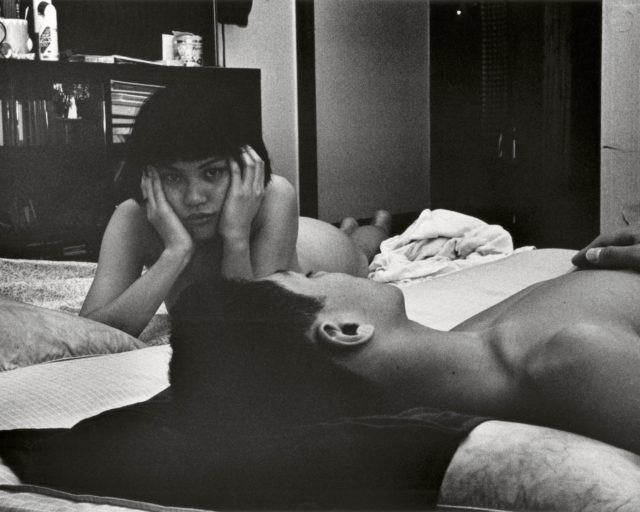Aerospace Folktales

Allan Sekula, from Aerospace Folktales, 1973
Courtesy Allan Sekula Studio and the Columbus Museum of Art
In 1973, a year that marked the beginnings of a national recession and the signing of a peace treaty to end the Vietnam War, Allan Sekula’s first major work took as its subject an aerospace engineer who had been laid off from Lockheed, then the single largest defense contractor in the United States. By combining intimate scenes of family life in a small Los Angeles apartment with various personal documents—family photo albums, a rental agreement, bookshelves filled with classic literature, the engineer’s CV, and job rejection letters—Aerospace Folktales explores the daily life of this unemployed white-collar worker and his family as their class identity is being thrown into question. Sekula then goes on to disrupt the usual objective distance of social observation and documentary politics by revealing that the unemployed worker is in fact his own father. The result is a group portrait of an artist and his family in relation to each other and to their surrounding social and economic structures.

Allan Sekula, from Aerospace Folktales, 1973
Courtesy Allan Sekula Studio and the Columbus Museum of Art
At its peak, in 1967, Southern California’s vast aerospace industry accounted for nearly half a million jobs. But the waning of the Vietnam War and of the Apollo space program, along with a recession, brought a sharp falloff in military and NASA procurements that resulted in a succession of layoffs during the early 1970s. Many of those employees were, like Sekula’s father, professionals and experts who had risen to the middle class after World War II by obtaining undergraduate and graduate degrees. Sekula forces both his subjects and viewers to consider the dissolution of the postwar American dream, and the artist himself wonders in an accompanying text what will become of his career as an “art engineer” once he completes his graduate degree.
In its original installation at the University of California, San Diego (UCSD), in 1973, Aerospace Folktales consisted of 142 black-and-white photographic images and text cards, along with four sound recordings of interviews between the artist and his father, his mother, and his mother’s friend (whose husband was also unemployed). Sekula hung the 142 photographs in a single row with text cards breaking the sequence into smaller groups that suggested the narrative flow and format of a silent movie. In this first exhibition, the audio played in an adjacent room, but in a 1974 installation at the Brand Library &Art Center in Glendale, near the Lockheed plant, the speakers were hidden behind potted plants in the gallery. At UCSD, Sekula performed a reading of an explanatory text, typed on seven pages of letter-size paper and titled “a commentary,” serving as a general narration but also “filling in for earlier omissions … because of the limited representational range of the camera.” In 1984, the year he published his seminal book Photography Against the Grain, Sekula edited the work down to fifty-one photographs, often grouped as diptychs or in grids of four, and three sound recordings.

Allan Sekula, from Untitled Slide Sequence, 1972
Courtesy Allan Sekula Studio and the Columbus Museum of Art
Sekula referred to the work, with its deconstruction of the essential elements of a film, as a “disassembled movie.” He had already begun to experiment with this format in his 35mm slide show Untitled Slide Sequence from 1972. Here too he turned his camera on aerospace factory workers, but without the typical veneration associated with pictures of such laborers taken by photographers for the Office of War Information or popular magazines like Fortune during the 1940s. Instead, he chose to capture the workers just as they were leaving their shifts at a General Dynamics Convair Division factory in San Diego, where several of them likely helped produce the F-111 military planes that flew in Vietnam. The twenty-five images in this sequence depict a range of employees as they climb the staircase to a pedestrian overpass and are directly confronted by the artist’s camera. Sekula had originally envisioned Aerospace Folktales as a slide show as well, but ultimately decided to keep separate image, text, and audio “tracks,” allowing their formal discontinuities to underscore the contradictions inherent in the documentary genre as well as in contemporary life—both are their own kinds of folktales or mythologies.
To continue reading, buy Aperture Issue 226, “American Destiny,” or subscribe to Aperture and never miss an issue.
Drew Sawyer organized Allan Sekula: Aerospace Folktales and Other Stories, currently on view through July 2, 2017.























